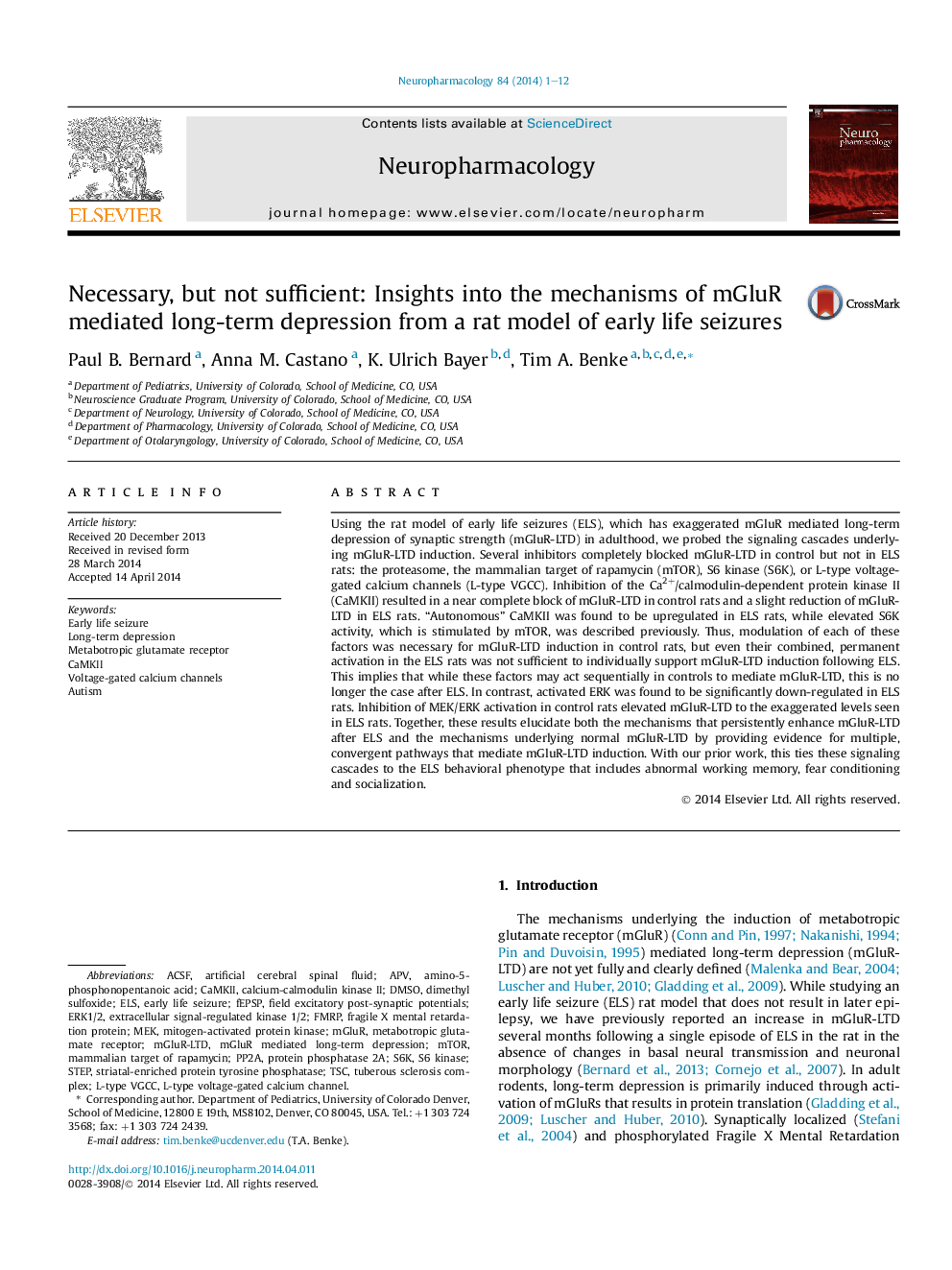| Article ID | Journal | Published Year | Pages | File Type |
|---|---|---|---|---|
| 5814503 | Neuropharmacology | 2014 | 12 Pages |
Abstract
Using the rat model of early life seizures (ELS), which has exaggerated mGluR mediated long-term depression of synaptic strength (mGluR-LTD) in adulthood, we probed the signaling cascades underlying mGluR-LTD induction. Several inhibitors completely blocked mGluR-LTD in control but not in ELS rats: the proteasome, the mammalian target of rapamycin (mTOR), S6 kinase (S6K), or L-type voltage-gated calcium channels (L-type VGCC). Inhibition of the Ca2+/calmodulin-dependent protein kinase II (CaMKII) resulted in a near complete block of mGluR-LTD in control rats and a slight reduction of mGluR-LTD in ELS rats. “Autonomous” CaMKII was found to be upregulated in ELS rats, while elevated S6K activity, which is stimulated by mTOR, was described previously. Thus, modulation of each of these factors was necessary for mGluR-LTD induction in control rats, but even their combined, permanent activation in the ELS rats was not sufficient to individually support mGluR-LTD induction following ELS. This implies that while these factors may act sequentially in controls to mediate mGluR-LTD, this is no longer the case after ELS. In contrast, activated ERK was found to be significantly down-regulated in ELS rats. Inhibition of MEK/ERK activation in control rats elevated mGluR-LTD to the exaggerated levels seen in ELS rats. Together, these results elucidate both the mechanisms that persistently enhance mGluR-LTD after ELS and the mechanisms underlying normal mGluR-LTD by providing evidence for multiple, convergent pathways that mediate mGluR-LTD induction. With our prior work, this ties these signaling cascades to the ELS behavioral phenotype that includes abnormal working memory, fear conditioning and socialization.
Keywords
CaMKIIfEPSPFMRPmGluRAPVstriatal-enriched protein tyrosine phosphataseS6KaCSFTSCPP2Acalcium-calmodulin kinase IImTORDMSOERK1/2S6 kinaseELSlong-term depressionAutismDimethyl sulfoxideartificial cerebral spinal fluidMEKfield excitatory post-synaptic potentialsmammalian target of rapamycinfragile X mental retardation proteinprotein phosphatase 2Amitogen-activated protein kinasevoltage-gated calcium channelsL-type voltage-gated calcium channelTuberous sclerosis complexextracellular signal-regulated kinase 1/2STEPMetabotropic glutamate receptor
Related Topics
Life Sciences
Neuroscience
Behavioral Neuroscience
Authors
Paul B. Bernard, Anna M. Castano, K. Ulrich Bayer, Tim A. Benke,
